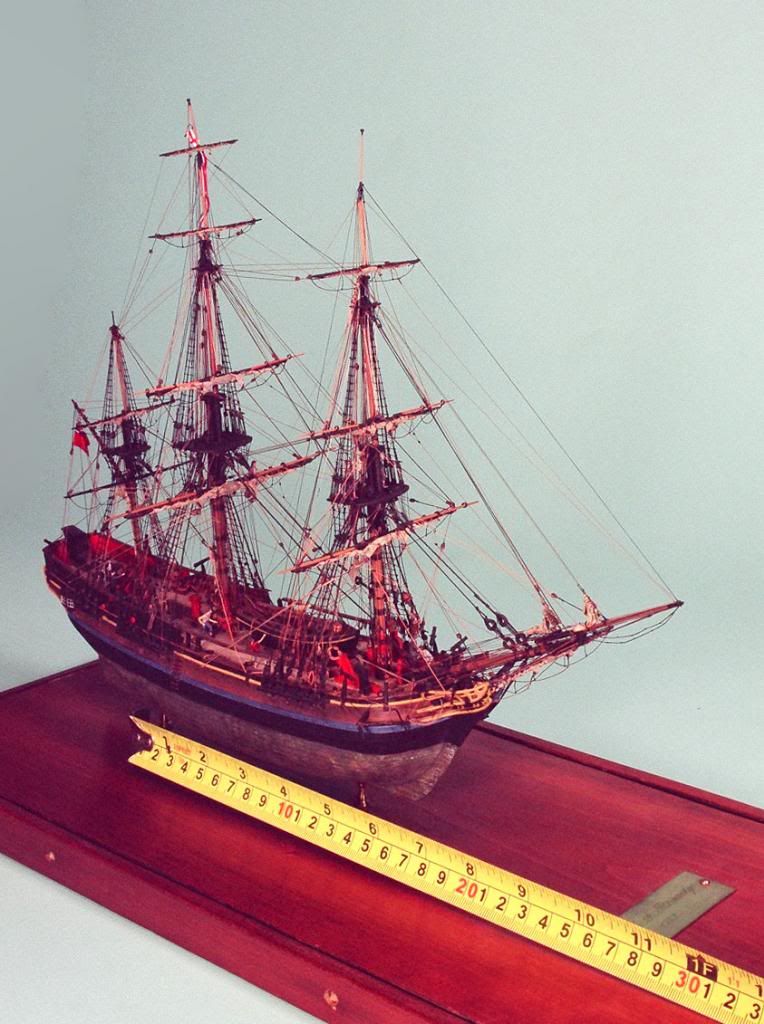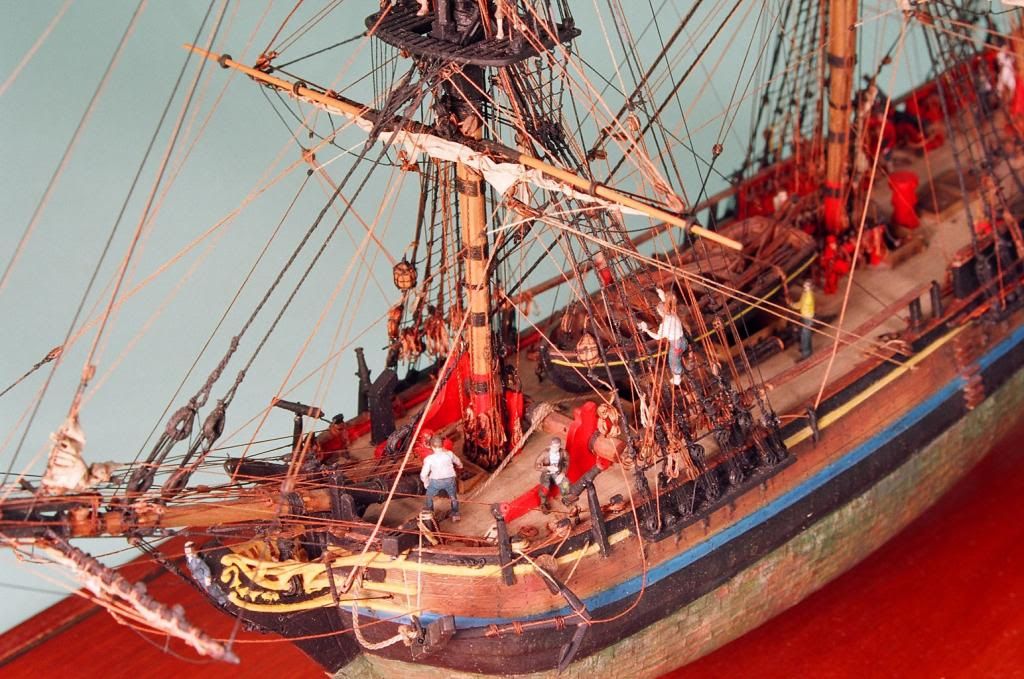H.M.S. Bounty
Quite a long time ago (between 1976 and 1978, I think) I built a model of H.M.S. Bounty, loosely based on the 1956 Revell kit. Since we've mentioned the subject several times here in the Forum, and since I've just acquired the ability to post photos, I thought I'd post these.

The old Revell kit was state-of-the-art in 1956, but it obviously isn't today. I wound up keeping the hull halves, the quarterbadges, the transom, the figurehead, the hull of the launch, and the crew figures. The rest went into the spares box. I don't think I'd build another model this way. Not making my own hull probably saved me a week - in a project that took a couple of years.
The oddball, fit-the-box scale works out to 1/110 - slightly larger than 3/32"=1'. The model is about 17" long overall.
It lives in a plexiglas case (which is why it's lasted 35 years). What's shown in the picture is the base of the case - cherry veneer over plywood. I can build better cases nowadays; someday maybe I'll build a new one for this model.

The deck is basswood (laid a plank at a time). The fittings are made out of lots of stuff: styrene sheet and rod, boxwood, cherry, brass, etc. The figurehead in the kit is a little undersized, but it's so beautifully done that I figured any attempt of mine to make a replacement would be stupid.

I scraped off the raised "surface detail" and scribed the edges of the hull planks. The bottom is covered with individual copper plates. (Revell missed the well-documented fact that the Bounty was copper-sheathed.) Model Shipways used to sell .001" sheets of copper. (Nowadays I'd use the self-adhesive copper tape sold by places like Model Expo.) The adhesive is good old-fashioned contact cement (the kind that really stinks). It's held firmly for 35 years. The indentations for the nails were put in with a dull needle chucked in a pin vise. The copper is weathered with PollyS paint (as it was called in those days).
The crew figures came from the kit, and from several others: the Revell Santa Maria and harbor tug Long Beach, and the Airfix Endeavour. Revell's human figures in those days were real tributes to the sculptor and the pantograph machine. Captain Bligh has individual upper and lower eyelids, and square buckles on his shoes.

My principal source of information for this model was an article in the Mariner's Mirror from about 1937. (The subject was hot at that time, because the Nordoff and Hall novels had just been published.) The article contained fold-out copies of the two Admiralty draughts of the ship - one as she'd been purchased and one after she'd been modified for her trip to the Pacific. (Revell - like lots of other people - apparently used the first set which, coincidentally or otherwise, was reproduced on exactly the same scale as the kit). I followed the second; my intention was to show her as she looked at the time of the mutiny. The changes include the capstan on the quarterdeck, the new ports in the side aft (to ventilate the breadfruit trees), and, most conspicuously, the little "deckhouse" at the stern. Some people have tried to convince themselves that it's a flag locker. I think it's a water closet for the captain, who got evicted from his cabin when it got turned into a garden for the breadfruit.
The spars are turned from degama (aka lancewood). The guns are turned from brass. The blocks and deadeyes are britannia metal castings from Bluejacket, as are the gratings. Most of the other fittings are scratchbuilt.
The rigging is silk thread, spun up into the appropriate sizes (hawser- and cable-laid, as appropriate) on my primitive "rope-making machine." At that time I think I was using one made from an Erector set.
The ratlines are the finest silk thread I could find at the time. (Good fabric stores in Columbus, Ohio in those days sold two sizes. I used those two to make all the lines in the ship.) By the time I finished this model a friend had given me a spool of very fine nickel-chromium wire, which I used for the ratlines on my next project, the Continental Frigate Hancock. The wire looks a lot better.
I can now see lots of things in this model that I could have done better. But that's a great part of the hobby.
Thanks for looking.